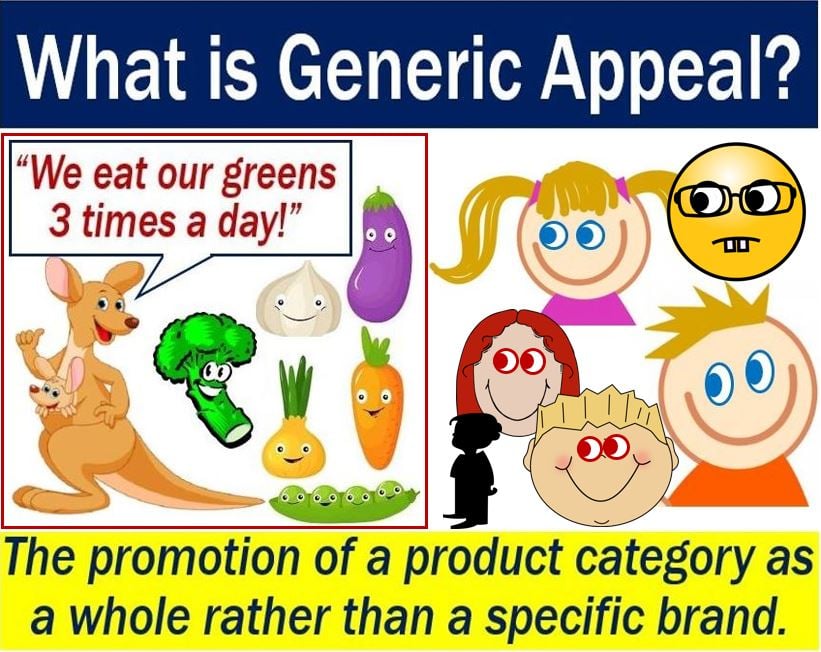Generic appeal – definition and meaning
Generic appeal is a strategy that advertisers use to promote a product category rather than a specific product or brand name. The advertiser aims to increase the consumption of the product category initially so that it can produce a continuous volume. It then sells that volume. The company only begins to promote its brand after there is significant consumption of the product.
Generic appeal is a popular strategy when companies are trying to promote their goods in rural areas. The strategy begins by promoting the product’s use, regardless of which brand consumers buy.
The Law Dictionary says that generic appeal refers to:
“Promoting a product category as an advertising strategy. Contrast this to marketing a specific brand name product in that category.”
The word ‘generic,’ in this article, refers to product categories rather than specific goods.
Generic appeal – examples
Let’s suppose, for example, you want children to eat more of your company’s vegetables. Initially, you need to get kids consuming more vegetables.
Therefore, your advertisements start off by encouraging children to eat more greens. Your campaign will show many different vegetables, and not just your brands.
When vegetable consumption for children picks up, then you begin promoting your company’s brands.

MBAskool.com gives the example of HUL through its Shakti Amma campaign in India. It first began making women agents educate others on the usage of shampoos, soaps, detergents, etc.
Once demand grew, the company (Unilever) pushed its own brands with the female agents. Thus, they managed to create a sustainable business in rural areas.
Generic appeal during shortages
Sometimes, generic appeal is a strategy that non-profit organizations use when there is a shortage of something.
If hospitals nationally are short of blood, it becomes necessary to launch a public appeal. All healthcare organizations and charities may join to promote giving blood.
The strategy may also include encouraging people to become more compassionate and good citizens. Additionally, the advertisers may widen their focus, and encourage people to become organ donors.

